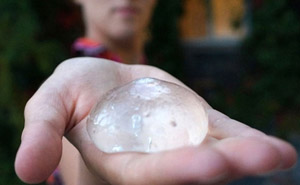
London, Apr 29: Finished drinking your bottle of water? Now eat it! A design student in the UK has developed an edible bottle that could rid the world of excess plastic waste. Rodrigo Garcia Gonzalez, along with fellow students from Imperial College London, has been working on the Ooho water bottle for the past few years.
The bottle is made from edible material, looks like a jellyfish, and has the potential to put an end to the bottled water industry, Smithsonian.com reported.
The Ooho bottle is inspired by the juice-filled pearls added to bubble tea and the creations of legendary Spanish chef Ferran Adria, who uses a technique for encasing liquids in edible membranes known as sheperification.Gonzalez and his team first took a frozen ball of water and dipped it into a calcium chloride solution, which formed a gelatinous layer.
The frozen ball was then soaked in another solution made from brown algae extract, which encapsulated the ice in a second squishy membrane that further reinforced the structure. Keeping the frozen water in the algae solution for long periods of time allowed the mould to become thicker and stronger.
"The main point in manipulating the water as solid ice during the encapsulation is to make it possible to get bigger spheres and allow the calcium and algae to stay exclusively in the membrane," Gonzalez said.
The Ooho has been tested in some European cities, but the researchers need to perfect it, as their edible bottles still don't hold large amounts of water and also can't be resealed. Even with the Ooho's fortified layers, Gonzalez describes the container's strength as comparable to the skin of a fruit. "We're trying to address this with a double container," he said.





Comments
Add new comment